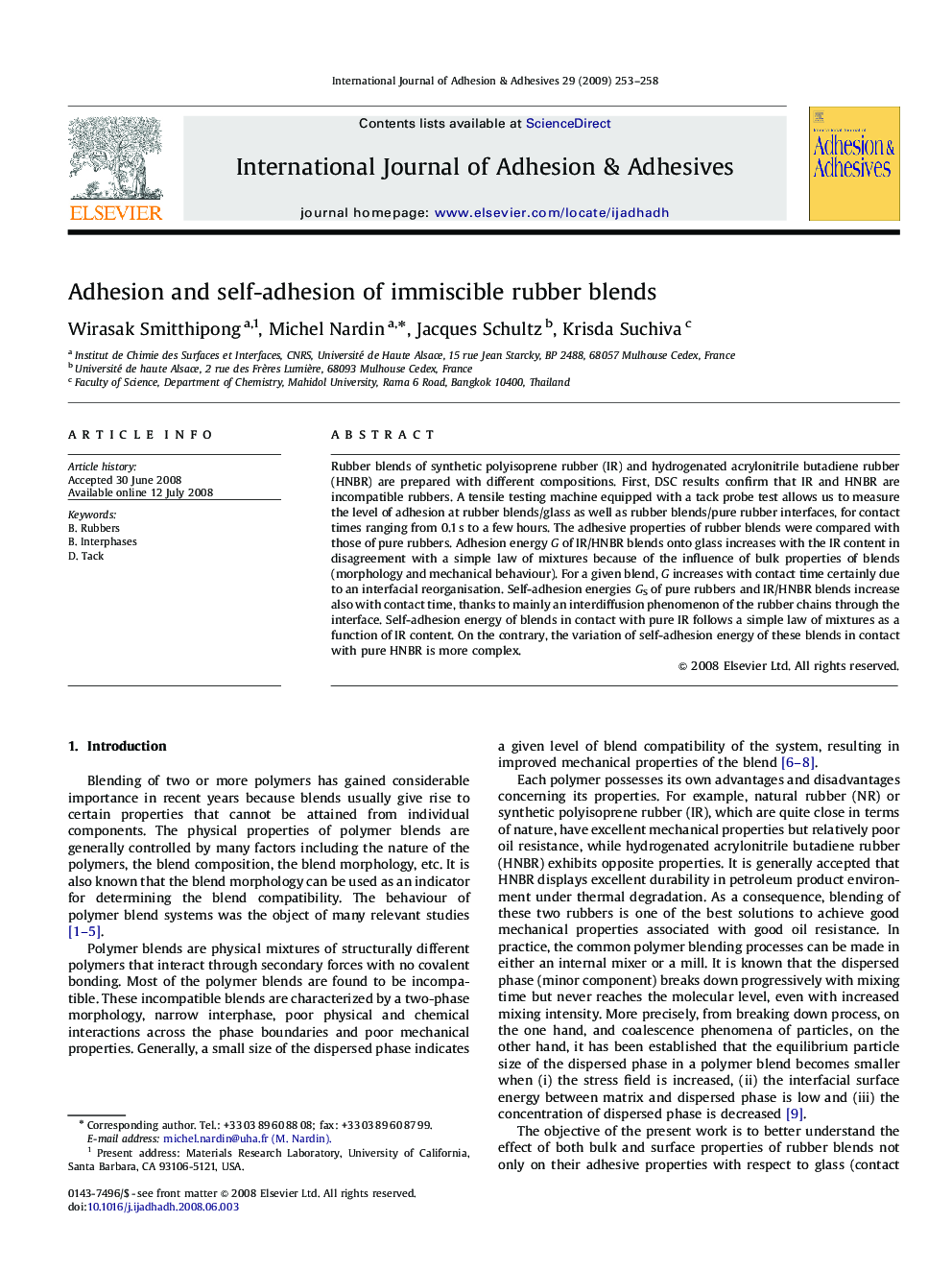| کد مقاله | کد نشریه | سال انتشار | مقاله انگلیسی | نسخه تمام متن |
|---|---|---|---|---|
| 776476 | 1463527 | 2009 | 6 صفحه PDF | دانلود رایگان |

Rubber blends of synthetic polyisoprene rubber (IR) and hydrogenated acrylonitrile butadiene rubber (HNBR) are prepared with different compositions. First, DSC results confirm that IR and HNBR are incompatible rubbers. A tensile testing machine equipped with a tack probe test allows us to measure the level of adhesion at rubber blends/glass as well as rubber blends/pure rubber interfaces, for contact times ranging from 0.1 s to a few hours. The adhesive properties of rubber blends were compared with those of pure rubbers. Adhesion energy G of IR/HNBR blends onto glass increases with the IR content in disagreement with a simple law of mixtures because of the influence of bulk properties of blends (morphology and mechanical behaviour). For a given blend, G increases with contact time certainly due to an interfacial reorganisation. Self-adhesion energies GS of pure rubbers and IR/HNBR blends increase also with contact time, thanks to mainly an interdiffusion phenomenon of the rubber chains through the interface. Self-adhesion energy of blends in contact with pure IR follows a simple law of mixtures as a function of IR content. On the contrary, the variation of self-adhesion energy of these blends in contact with pure HNBR is more complex.
Journal: International Journal of Adhesion and Adhesives - Volume 29, Issue 3, April 2009, Pages 253–258